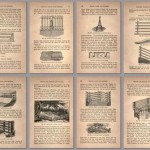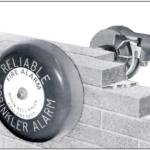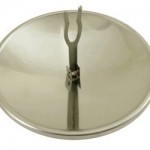- Biggest Spike in Traffic Deaths in 50 Years? Blame Apps [NYT]
- The Analog Spaces in Digital Companies [The New Yorker] [Via]
- Smartphone Users Trust Strangers Less [Journalist’s Resource]
No Tech Reader #10
The Office on the Move: Portable & Pocket Typewriters
 At least since the 1980s, home working has been touted as a trend with potential environmental benefits. Since the arrival of mobile phones, portable computers and the internet in the 1990s, the focus has shifted to “remote” or “agile” working, which includes working at home but also on the road and in so-called third places: coffeeshops, libraries or co-working offices.
At least since the 1980s, home working has been touted as a trend with potential environmental benefits. Since the arrival of mobile phones, portable computers and the internet in the 1990s, the focus has shifted to “remote” or “agile” working, which includes working at home but also on the road and in so-called third places: coffeeshops, libraries or co-working offices.
According to a 2014 consultancy report, “the vast majority of jobs in most organisations can be accomplished from virtually any PC or mobile device, from just about anywhere”. Upon a closer look, however, wireless computing isn’t that revolutionary as you would expect. The laptop and the internet have eroded the anchoring function of the office, but this is only a novelty if you compare with the office of 25 years ago. In a larger historical context, not that much has changed.
The Hermes Featherweight. Source: ozTypewriter.
Human Powered 3D Printer
The Trophy is a 3D Print Machine, consisting of an Ultimaker 3D printer and a stationary bicycle to power it. Pierre-Clement Niviere designed it to make people aware of the high energy consumption of printing a 3D-object, criticising a technology that’s usually presented as an environmentally friendly way of production. The set-up also involves the maker in the creation process, raising questions about how 3D printing is changing making.
See it in action. Previously: Mechanical 3D-printer. Thanks to Pim Rooymans.
No Tech Reader #9
- Hail the maintainers. [Aeon]
- The end of upgradable Apple computers. [Motherboard]
- Eye contact is good for you. [Guardian]
- Weapons AI increasingly replacing, not augmenting, human decision making. [Defense One]
- The demoralized mind. [New Internationalist]
- The binge breaker. [Atlantic]
- Crash: how computers are setting us up for disaster. [Guardian]
Last three links via Hunther/Gatherer.
Vertical Walking
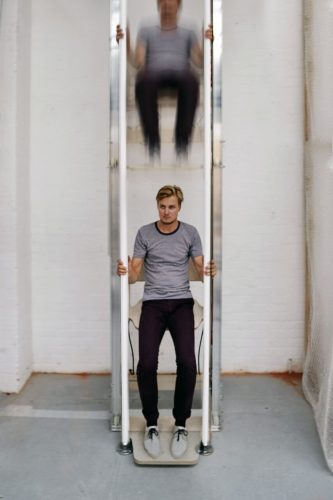 “Even as our cities get more crowded and its buildings get taller, it seems that we have yet to find a more energy efficient way to navigate this high-rise environment. Right now, our options are limited to stairs, escalators, and elevators—all of which are expensive, require constant maintenance, and take up a lot of space.
“Even as our cities get more crowded and its buildings get taller, it seems that we have yet to find a more energy efficient way to navigate this high-rise environment. Right now, our options are limited to stairs, escalators, and elevators—all of which are expensive, require constant maintenance, and take up a lot of space.
Enter Rombout Labs and their concept of “vertical walking.” Their technology is designed to allow humans to move between building floors without the need for any sort of power supply, also using less effort than we would if we were using stairs, and making optimal use of available vertical space.
“By using harmonious movements and smart materials, only 10% of the effort of walking stairs is needed to bridge multiple floors. This not only provides a solution for the growing number of people who are unable to take stairs, but moreover offers new possibilities for urban architecture,” they explain on the Dutch Design Week website, where the system is currently featured.”
See & read more: New Futuristic Prototype Replaces Stairs and Elevators for ‘Vertical Walking’.
Pigeon Towers: A Low-tech Alternative to Synthetic Fertilizers
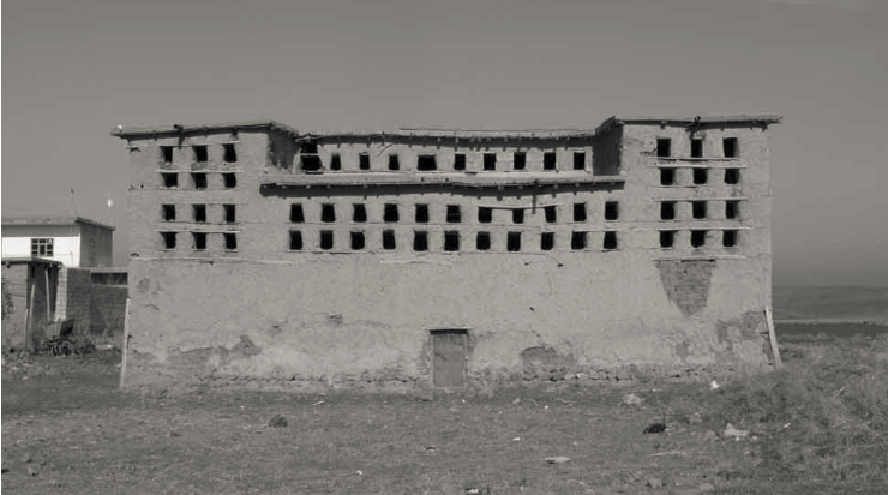 Photo credit: Bekleyen, A. (2009). The dovecotes of Diyarbakır: the surviving examples of a fading tradition. The Journal of Architecture, 14(4), 451-464..
Photo credit: Bekleyen, A. (2009). The dovecotes of Diyarbakır: the surviving examples of a fading tradition. The Journal of Architecture, 14(4), 451-464..
Many societies, ancient and contemporary, have innovated ways of supplying their fields with fixed nitrogen and phosphorus—two crucial ingredients for crop productivity. One is crop rotation, which alternates nitrogen-fixing and nitrogen-exhausting crops. Farmers around the world make use of chickens, ducks, and geese to add “fresh” guano to their fields. Cattle manure is another useful alternative—although it often lacks in phosphorus. Much more labor intensive than simply adding fossil-fuel derived synthetic fertilizer, these practices tend to build up soil, limit greenhouse gas emissions, and lead to less run-off into rivers, lakes, and oceans.
Persian pigeon towers are one of the more elegant solutions to the nitrogen-phosphorus problem. These are essentially castles built for thousands of wild pigeons, strategically placed in the middle of the fields. Their droppings were shoveled up once a year and sold to nearby farmers. While most pigeon towers existing today are in disrepair, the oldest still standing are dated to the 16th century (but they are assumed to have existed over 1,000 years ago) and helped fuel the cultivation of Persia’s legendary orchards, melons, and wheat production.[1] [Read more…]


